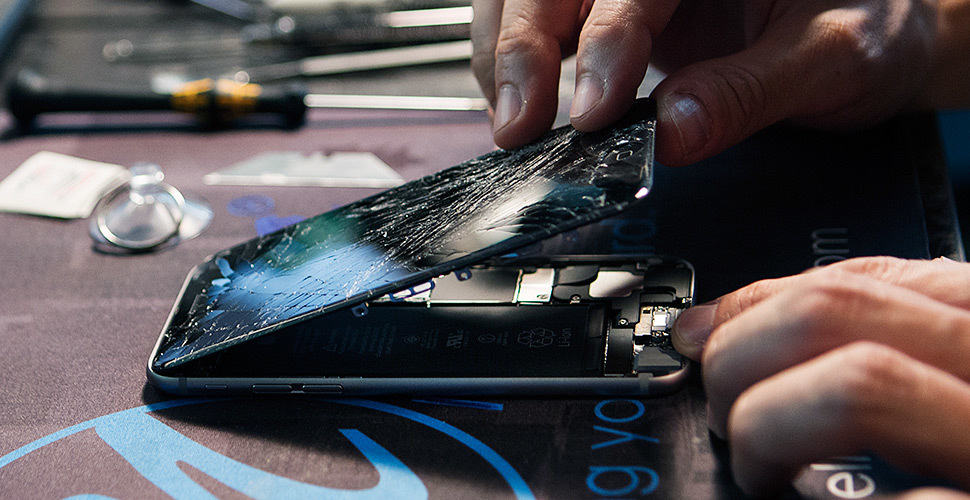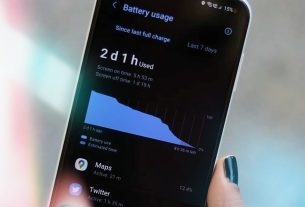Fri 10 May 2019:
Online repair communities are spreading repair knowledge online to place power back in the hands of consumers
When Jessa Jones’s twin daughters flushed her iPhone 4S down the toilet, she decided that she was going to fix it herself. She took the toilet apart in her backyard, retrieved the device, and then searched online for how to make it turn on again. On DIY fix-it forums, she was informed that the first step was to replace the battery. She did this with relative ease, but the phone wouldn’t charge, which suggested that the water had also seeped into the phone’s motherboard.
For most, this would mean giving up and going to the Apple store. But Jones was determined. She had no experience working with electronics but by trawling through online tutorials, she taught herself how to use a soldering iron and replace microscopic components inside the phone. She eventually succeeded and got the device working again.
Jones found the repair work satisfying, and repairing electronics became a new hobby. She started buying dead devices on Craigslist and refurbishing them to sell. Then she listed herself on eBay as a mail-in motherboard repairperson – within months, repair shops across the country were sending her micro-soldering jobs that were too complex for them.
Jones soon had more business than she could handle. After recruiting other stay-at-home moms in her neighborhood and teaching them electronics repair, she launched a small business from her dining room called MommyFixits. “Suddenly our play dates became moms sitting around the dining table fixing mailed-in iPhones,” she told me.
As Jones’s expertise grew, she discovered that technology manufacturers used underhanded techniques to discourage independent repair. Phone and tablet parts were glued together, causing components to break when pried apart. Schematics and manuals were copyrighted and kept under trade secret. Apple even used their own proprietary “pentalobe” screws, which cannot be removed with common screwdrivers.
Despite these barriers to repair, Jones knew that fixing things independently, instead of taking them back to the manufacturer, was almost always possible and often cheaper. To spread her knowledge, she started a YouTube channel called iPad Rehab, which offered step-by-step repair tutorials for other DIY enthusiasts.
One of Jones’s more popular videos was of her fixing “touch disease” on an iPhone 6, a common problem where the touch pad stops working. Jones told me that this issue was endemic in iPhone 6s due to a design error in the phone that allowed it to bend, meaning that a small component on the logic board would dislodge. When Apple customers took their faulty phones back to the Apple store, they were given a replacement at a reduced price. The problem, according to Jones, was that the new phone had precisely the same defect as the old one, and the “touch disease” would return, sometimes in a matter of days.
In her 30-minute video, Jones demonstrated how she could fix the cause of the problem by adding a tiny metal wire under one part of the logic board, which prevented the component from dislodging. “When people watched that video, they could see a real person opening up a phone, explaining how it works, and then fixing the problem. It was so different from the experience of the Apple shop, where a Genius disappears and comes back with a white box,” she said. “My YouTube channel just raised awareness that real repair is possible.”
Jones, whose channel now has more than 115,000 followers, is part of a network of YouTube tinkerers who are spreading their repair knowledge online to place power back in the hands of consumers.
Kyle Wiens, co-founder of the online repair community iFixit, uses YouTube to broadcast “teardowns”, where he dismantles a device piece by piece to show users how everything inside works and its potential reparability. Louis Rossmann, a technician with a small repair shop in New York, has a channel with more than 800,000 followers, where he regularly posts videos of him repairing Apple computers. There are also hundreds of thousands of amateur videos, where people from around the world teach others how to repair washing machines, light fixtures, cars, pool filters, rice cookers, and so on.
According to Nathan Proctor, director of the Campaign for the Right to Repair at the US Public Interest Research Group, this YouTube community is an integral part of a broader political movement that is attempting to wrest consumer agency from an increasingly consolidated electronics marketplace.
Proctor says that while in the past there was a legal balance between protecting manufacturers’ intellectual property and empowering consumers to tinker with, modify, and repair their own products, the rise of software in electronics has shifted power to manufacturers. Not only are the products more complex and harder to fix, the line between self-repair and hacking has become nebulous, meaning that manufacturers have been able to use digital copyright law to gain a legal monopoly over repair. This, in turn, has created a broader cultural anxiety around self-repair, a sense that when our devices malfunction, the problem can only be dealt with by so-called experts at a specific company.
According to Proctor, YouTube channels such as Jones’s are useful in disrupting this dynamic. “I frequently will talk to people who had something break on their phone and were told that they had to replace it with the manufacturer,” he said. “But then they go on YouTube and watch a video and realize that fixing it isn’t impossible, that you could learn how to or find someone who can.”
As a result of this, those at the forefront of the online repair community are sometimes met with hostility from manufacturers. Apple has brought suits against unauthorized repair shops and have had their intellectual property lawyers directly contacted some YouTube tinkerers.
This type of behavior has radicalized a number of YouTube repairers, including Jones and Rossmann, whose videos now often venture into right to repair advocacy. This places them in a growing coalition of consumer freedom advocates, farmers, hackers, and environmentalists who are pushing for legislation that will allow consumers to fix what they own and empower third-party independent repair shops. In the US, so far 20 states have expressed interest in this type of legislative reform, and Senator Elizabeth Warren in March called for a national right to repair bill, which, while specifically made for farmers wanting to repair their own tractors, would have broad repercussions for all technology manufacturers.
While such legislation would be a victory for consumer rights, more fundamentally, Jones sees the right to repair as an integral step in making people less alienated from the production process. “What we’re giving up when we lose the right to repair is this sense of investigation and wonder and tinkering,” she says. “We’re made to see our devices as if they are these sacrosanct objects but really, they’re just a battery and a screen, something that a stay-at-home mom can learn how to fix in her dining room.”
-theguardian.com
Think your friends would be interested? Share this story!





